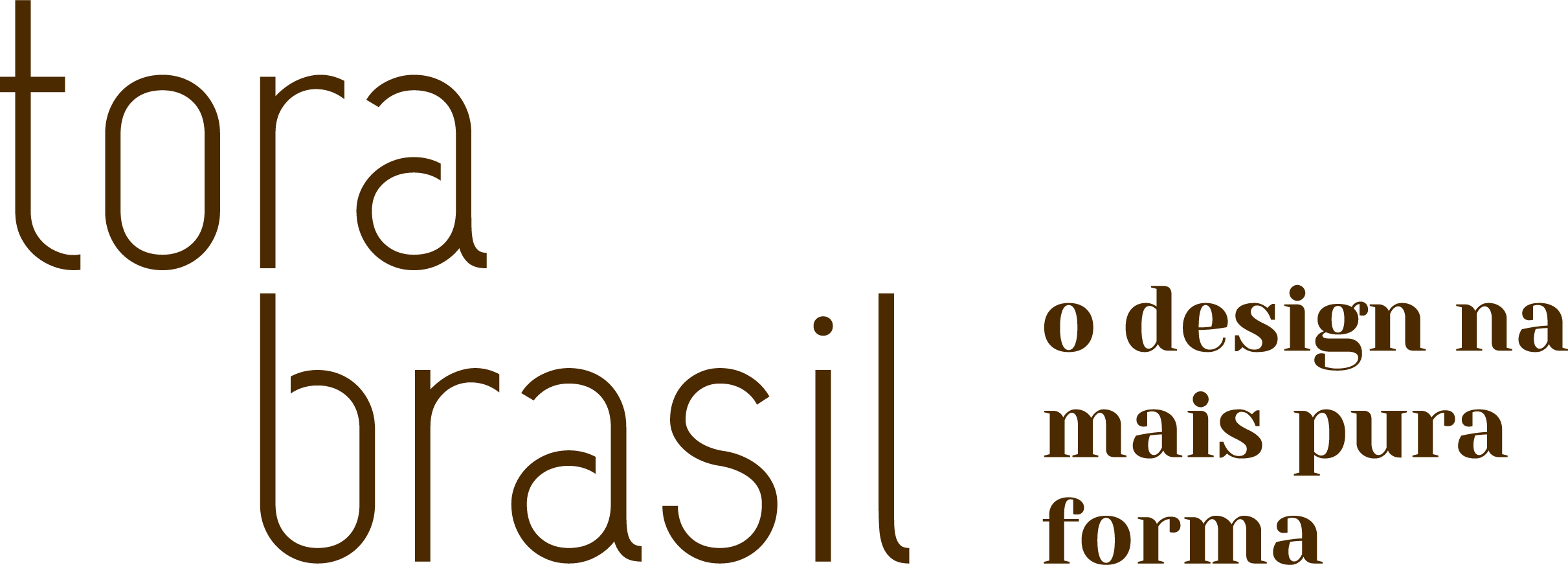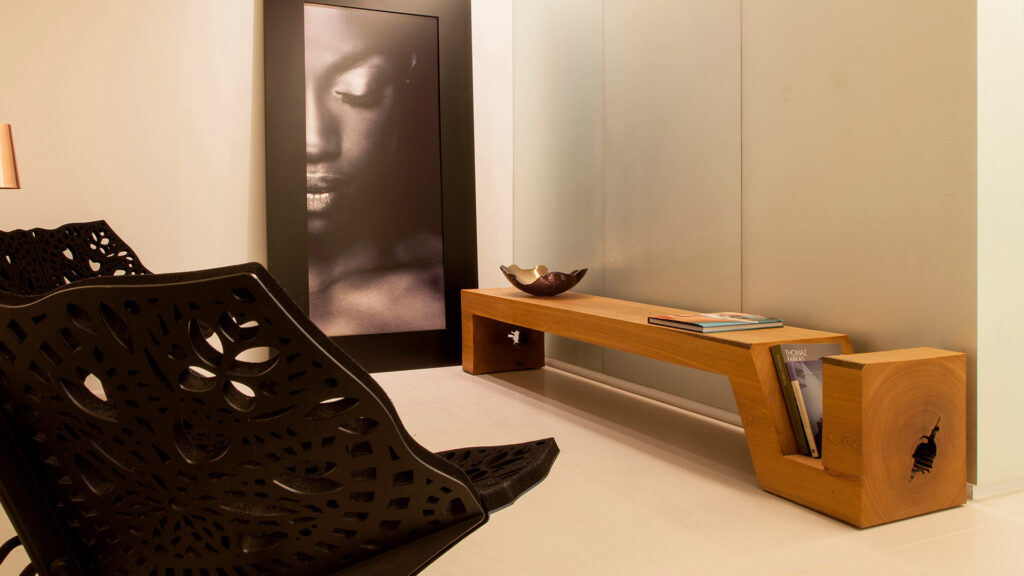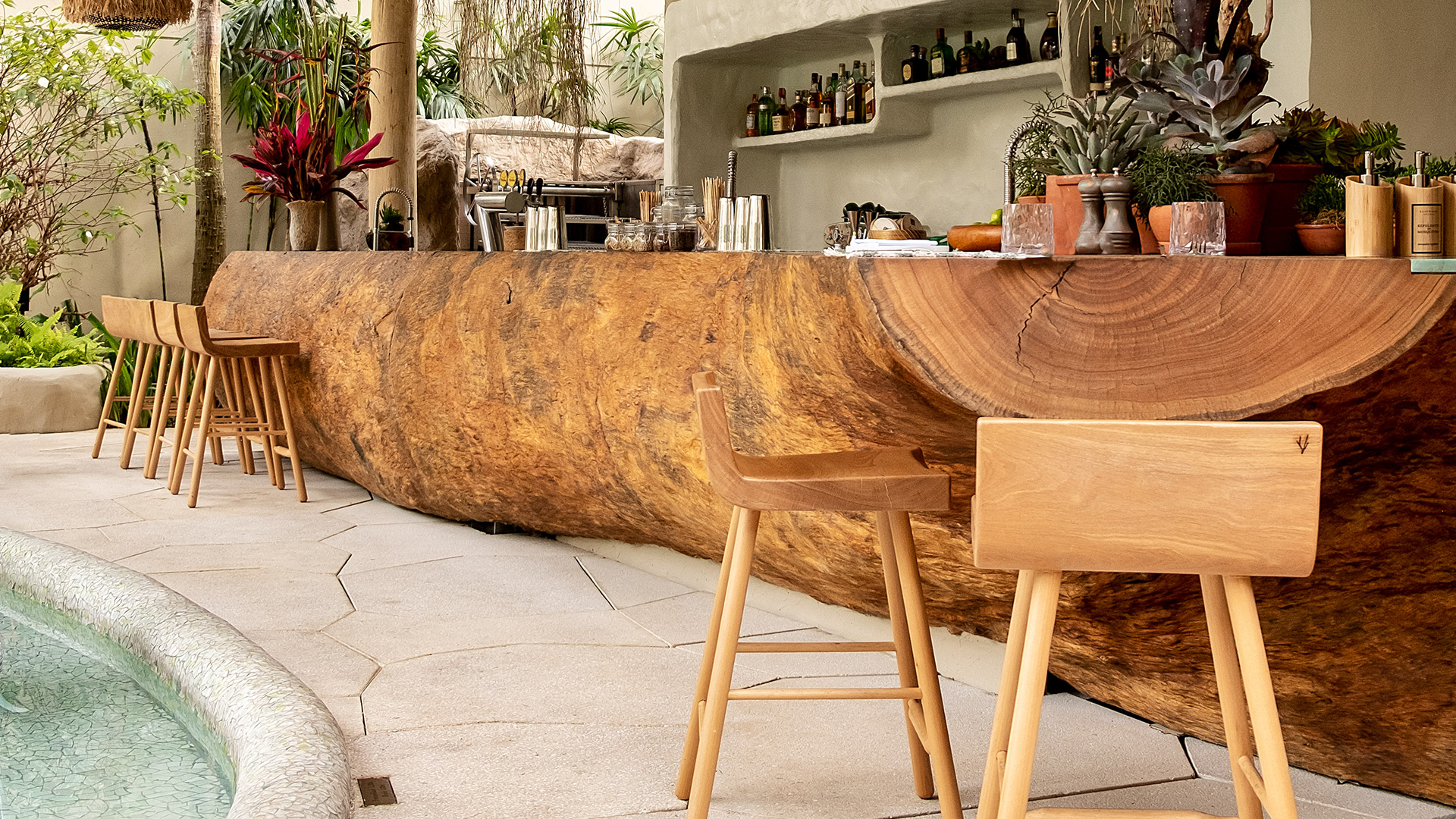essentials collection
by studio mk27
photo: fernando guerra
No matter how much we desire it, we will never be able to be more perfect than nature.
In a way that we cannot control, nature brings its own characteristics to each detail. This applies to smells, tones, textures and shapes. And we respect it. Our “essentials” collection follow some design “guidelines” that we have created in these past two decades. However, these designs take advantage of natural shapes and veins.
The result is that we can follow a concept, but we have to be very open to what nature give us in that specific piece just like a new life being generated in a mother’s womb: It will follow the lines of the parents, but we do not have control over determining the profile, the eye color, the skin texture. We just have to admire.
coffee table
by carlos bracher arquitetos associados
photo: julia ribeiro
Aimara
Angatu
Araruama
Amari
Irati
Manauara
Pará
Amari
Puã
Rondônia
Rondônia - Double
Eçaí
dining table
by carlos bracher arquitetos associados
photo: julia ribeiro
Amari
Akatu
Manauara Yassaí
Ibiraci
Ibiraci - Antã
Guaçu
Guaçu - Antã
console
Caturama Duplo
Caturama Triplo
Guaçu
Tupana
Potar
bench
by bernardes arquitetura
photo: daniel pinheiro
Guapig
Iguatemi
Guaraquessaba
desk
photo: julia ribeiro



